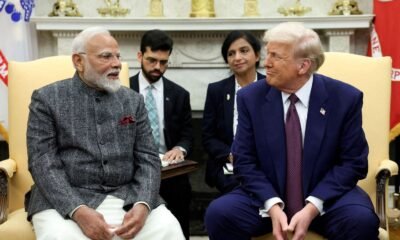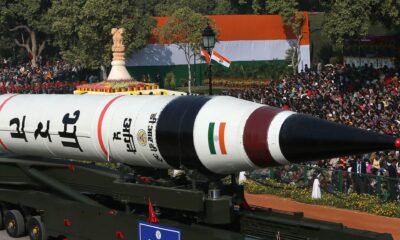Travel Guides & Articles
Pakistan, Bangladesh sign visa-free travel pact, launch knowledge corridor
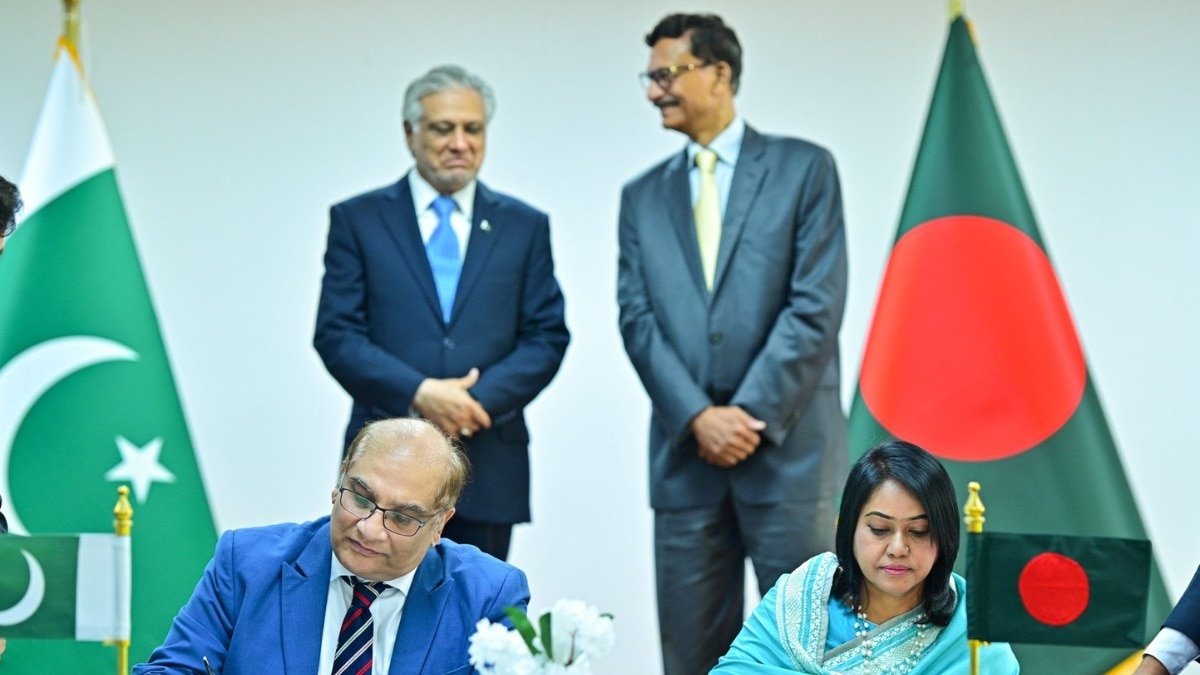
In a major diplomatic breakthrough, Pakistan and Bangladesh have signed a visa-free travel agreement for holders of government and diplomatic passports — a move set to ease official travel and deepen the bilateral engagement between the two nations.
The agreement was one of six signed on Sunday during the visit of Pakistan’s Deputy Prime Minister and Foreign Minister Muhammad Ishaq Dar to Dhaka, marking the first such high-level trip in 13 years.
The visa-free pact was formalised following delegation-level talks between Dar and Bangladesh’s Foreign Affairs Adviser Mohammad Touhid Hussain. Other agreements aim to bolster cooperation in trade, diplomatic training, education, media, strategic studies, and cultural exchange.
Dar’s two-day official visit, described by Pakistan’s Foreign Ministry as an “important step in strengthening bilateral ties,” also included meetings with leaders of several political parties, including the BNP and Jamaat-e-Islami, with the latter having historically opposed Bangladesh’s independence in 1971, making the engagement especially noteworthy.
According to The Daily Star, both countries plan to revive their Joint Economic Commission, with a meeting expected in September or October, the first in nearly 20 years. Pakistan’s Finance Minister Muhammad Aurangzeb is scheduled to visit Dhaka for this purpose.
The six agreements include:
- Visa-free travel for holders of diplomatic and official passports.
- Trade working group formation to address trade issues and boost bilateral commerce.
- Foreign service academy collaboration between diplomatic training institutions.
- Media cooperation between Associated Press of Pakistan and Bangladesh News Agency Sangbad.
- Strategic studies partnership involving research institutions from both sides.
- Cultural exchange programmes to promote mutual understanding through art and traditions.
STRENGTHENED BILATERAL TIES
At a joint press conference, Dar stated that Pakistan seeks “a new era of partnership with Bangladesh” and called on the government, political parties, and youth to unite in strengthening bilateral relations.
Pakistan’s Foreign Ministry highlighted that the talks took place in a “cordial atmosphere,” reflecting “the existing friendship between the two countries.” Discussions also touched on regional and global issues, including the Palestine and Rohingya crises, and the revival of SAARC.
In a move aimed at boosting people-to-people ties, Pakistan announced 500 scholarships for Bangladeshi students over the next five years, with 25 per cent allocated for medical education. It also increased scholarships under its technical assistance programme from 5 to 25 and pledged specialised training for 100 Bangladeshi civil servants.
– Ends
With inputs from ANI
Tune In
Travel Guides & Articles
India’s Cultural Wanderlust Is Redefining Travel In 2025 | Travel News
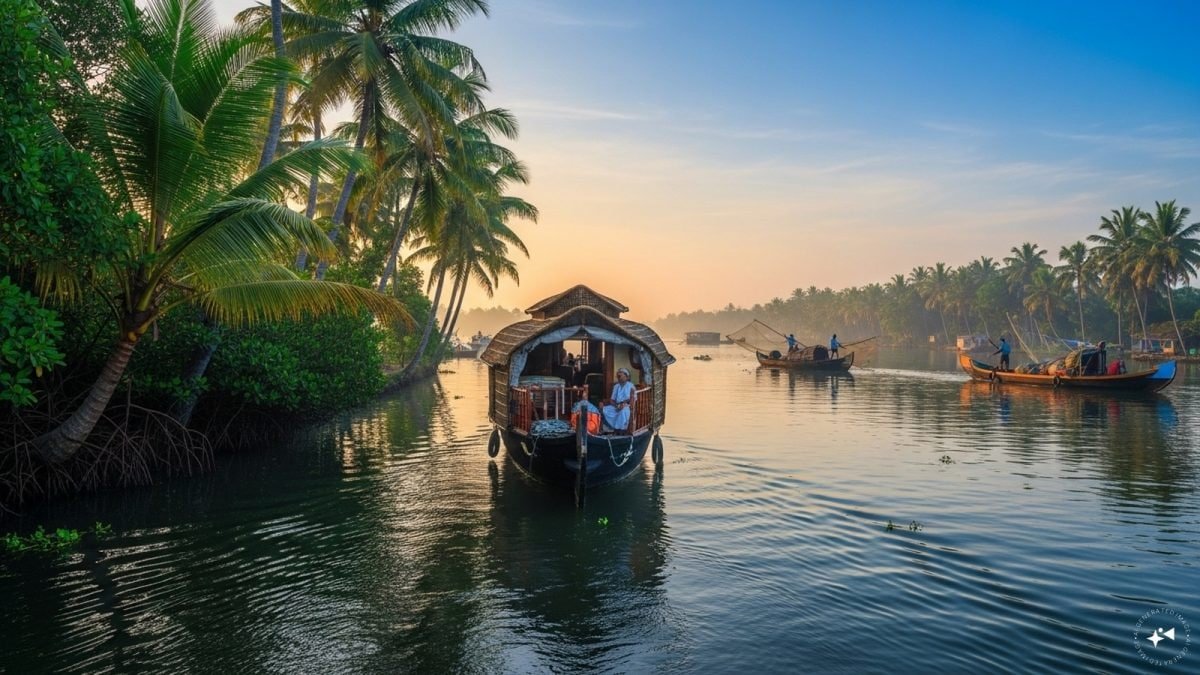
Last Updated:
Eight in ten Indians now say they plan their trips around cultural experiences, be it grand festivals, local traditions, or ancient heritage, says report.
From Kerala’s backwaters and Ayurveda to the Northeast’s tribal festivals, travellers are weaving deeper meaning into their journeys
For decades, Indian holidays often meant quick getaways, famous monuments, or beaches with family. But 2025 is bringing a different mood to the way India travels. According to Skyscanner’s latest Cultural Tourism report, culture has shifted from being a backdrop to becoming the very purpose of a journey. Eight in ten Indians now say they plan their trips around cultural experiences, be it grand festivals, local traditions, or ancient heritage.
Festivals as the New Compass
More than half of Indian travellers (55%) have attended cultural festivals or fairs, and a staggering 76% have even altered travel plans just to witness a cultural spectacle. This year, Durga Puja in Kolkata (53%), Lathmar Holi in Barsana (51%), and Onam in Kerala (35%) top the must-see list. Beyond festivals, historical cities like Jaipur and Varanasi, and UNESCO World Heritage sites such as Hampi and the Taj Mahal, continue to pull in culture-curious Indians. Skyscanner data even shows that searches for Varanasi have increased by 76% in 2025 compared to the previous year.
Hidden Gems Take Centre Stage
It’s not just the big names that are drawing attention. An overwhelming 93% of travellers said they would consider lesser-known destinations if they offered authentic cultural experiences. This reflects a growing appetite for hidden gems: villages, towns, and communities where traditions thrive away from crowded tourist trails. One way to explore these hidden treasures is by using Skyscanner’s ‘Explore Everywhere’ search feature, with filter options like ‘underrated destinations’ and ‘art and culture’ to make it easier than ever to find the perfect spot for a unique tradition-rich escape.
Travel for Connection And Meaning
“Indian travellers are moving beyond holidays taken only for leisure. The growing quest for depth has given rise to a new archetype, the culture-curious traveller, one who seeks knowledge, connection, and fulfilment,” said Neel Ghose, Skyscanner Travel Trends and Destinations Expert. “For them, success is measured in stories carried home that deepen their sense of people and place. Interestingly, our report also highlights that 71% prefer to travel with family, followed by 62% with friends, and 56% with a partner or spouse. This shows travel today is shifting from sights seen, to connections deepened and Skyscanner’s all-in-one app makes it easier and more affordable to plan those meaningful journeys.”
From Observing to Immersing
The new cultural traveller doesn’t want to just watch; they want to participate. Four in ten want to explore heritage villages or eco-cultural communities, while 38% are keen on culinary trails that reveal the roots of local cuisines. As Dr. Aditi Rawat of Pahle India Foundation puts it, “Cultural tourism is fast becoming a defining lens through which Indian travellers experience their country and the world. The trend is moving towards combining cultural discovery with comfort, luxury, and leisure, a blend that encourages longer stays and deeper engagement. Catalysed by rising accessibility, robust infrastructure, and digital connectivity, it is reshaping travel from passive sightseeing to immersive storytelling, where visitors engage with living heritage, traditions, and narratives that define each destination.”
Safety, Planning, and Smart Hacks
Practicality, of course, remains key. Safety ranks as the top consideration (45%) when choosing a cultural trip, followed by authenticity (33%) and seasonality (31%). Most travellers start planning one to two months in advance, leaning on social media (45%), friends and family (39%), and apps like Skyscanner (27%) for inspiration. And when it comes to booking, value matters! 60% say knowing the cheapest time to fly during a festival is their most helpful hack.
To further assist Indians in charting their journeys, Neel Ghose added, “For travellers seeking inspiration, describing your ideal getaway on Skyscanner’s app-only AI feature, Savvy Search can help uncover temple cities, native lands, royal palaces, and more. The tool curates a list of destinations based on the prompts, directing you to Skyscanner’s flight search, letting you compare the best prices. And, when it comes to planning, for those looking to make the most of their holiday around a festival, a simple hack is to use the ‘Whole Month’ view to spot the cheapest days to fly around the date! Smart planning choices like these can help unlock cultural experiences without breaking the bank, letting you create memories and returning home with learnings that last a lifetime.”
A Cultural Wave Shaping Tourism’s Future
What’s clear is that cultural curiosity isn’t just a passing trend; it’s reshaping Indian tourism itself. From Kerala’s backwaters and Ayurveda to the Northeast’s tribal festivals, travellers are weaving deeper meaning into their journeys. Supported by government initiatives such as Dekho Apna Desh and Swadesh Darshan 2.0, cultural tourism is becoming both an economic driver and a custodian of India’s diverse identity. As Dr. Aditi Rawat notes, “It is revitalising economies, positioning diversity as a global asset, and turning sites and practices into hubs that attract global visitors, empower local communities, and shape the future of India’s tourism economy.”
Our life needs a bit of style to get the perfect zing in the daily routine. News18 Lifestyle is one-stop destination for everything you need to know about the world of fashion, food, health, travel, relationshi…Read More
Our life needs a bit of style to get the perfect zing in the daily routine. News18 Lifestyle is one-stop destination for everything you need to know about the world of fashion, food, health, travel, relationshi… Read More
Travel Guides & Articles
Millennials and Gen Z make culture the hottest travel trend of 2025
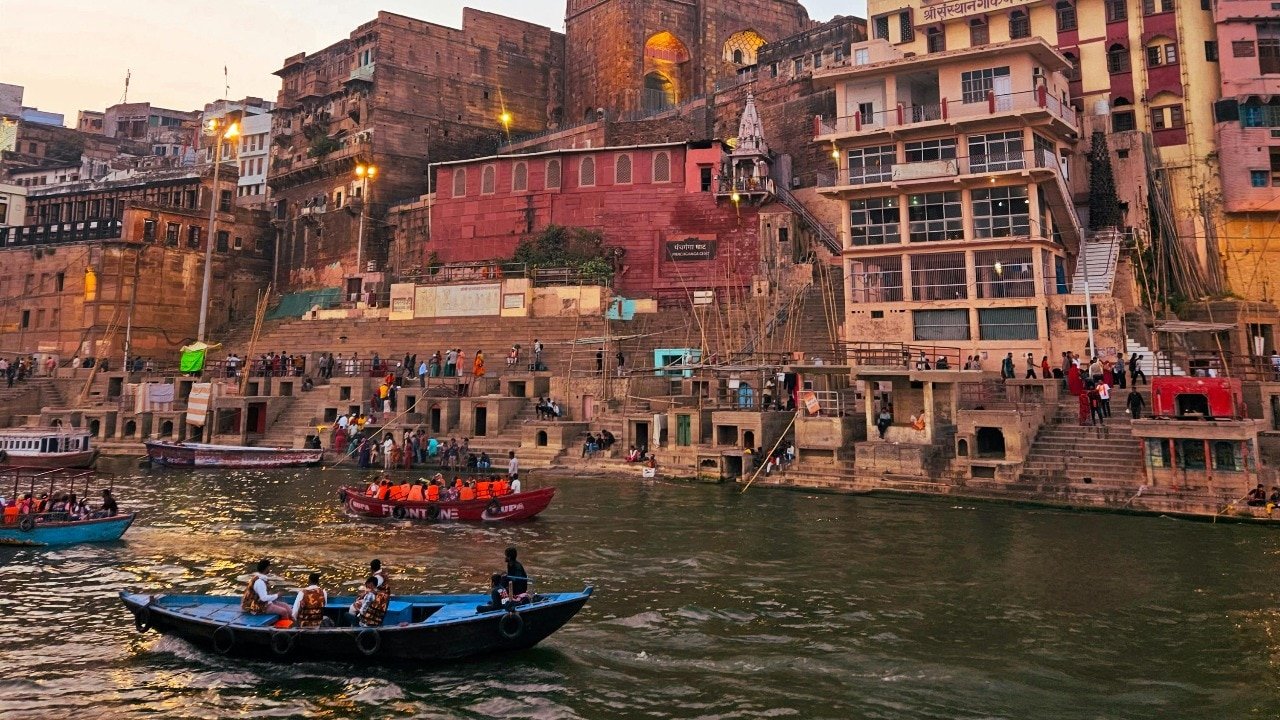
The new age of travelling is shifting landscapes one trip at a time. It’s beyond just regular sightseeing. Today, it’s staycations, wellness retreats, luxury escapes, and right now it’s all about soaking in culture. Why? Because experience value has found its place at the core.
Cultural tourism is making strides and Indian travellers are totally on board. Around 82 per cent of Indian travellers are looking for destinations that offer authentic local heritage, traditions, and experiences, according to the latest Cultural Tourism Report by Skyscanner.
In today’s era, people are not only keeping a travel budget aside but also curating itineraries specifically around the festive seasons. In fact, seven in ten travellers say they are open to exploring both local and international cultural diversity.
“Indian travellers are moving beyond holidays taken only for leisure. The growing quest for depth has given rise to a new archetype – the culture-curious traveller – one who seeks knowledge, connection and fulfilment,” says Neel Ghose, Skyscanner travel trends and destinations expert.
Festive first travel
Celebrating festivals is no longer a side activity. It’s becoming the main travel plan.
76 per cent of Indian travellers have altered their plans to attend a cultural event. And the hottest draws? Kolkata’s Durga Puja (53 per cent), Lathmar Holi in Barsana (51 per cent), and Onam in Kerala (35 per cent). For younger travellers, it’s about dancing, feasting, celebrating rather than just being passive observers.
Almost 55 per cent of Indian travellers have attended local festivals, fairs, or cultural events, the survey shows. And where is the bandwagon heading? Varanasi secures the top spot.
Interestingly, heritage cities are seeing renewed love. Kashi or Varanasi, one of the oldest Indian cities that brims with culture, heritage and traditions, has witnessed a 76 per cent jump in searches for 2025, followed by Jaipur, Agra, and Hampi.
Another growing category is the intrigue of the offbeat. A striking 93 per cent of travellers want to explore underrated destinations – tea festivals in Assam, tribal gatherings in Arunachal, or local heritage in Kerala. These offbeat spots are where authenticity thrives away from the commercialised masses.
Who are the trendsetters?
There are no brownie points for guessing who is leading this change – Millennials (84 per cent) followed by Gen Z (80 per cent).
At a time when travel trends are changing at lightening speed, solo travel is lowkey last season! It may have been the hype once, but family-first is back (fam jams for the win). 71 per cent prefer travelling with family, 62 per cent with friends, and 56 per cent with a partner.
And as this cultural wave builds, patterns are clear. Nearly four in ten want to explore heritage villages or eco-cultural communities, while 38 per cent are drawn to culinary trails revealing the historic roots of local cuisines. Dr. Aditi Rawat, associate fellow, Pahle India Foundation, explains that cultural tourism is evolving into “immersive storytelling,” blending comfort and discovery for longer, more meaningful stays.
Experience value remains the marker of success and 39 per cent of travellers consider a trip meaningful only if they return home having learnt something new about the place or its people.
Gathering anecdotes and lifetime experiences is all good, but before that comes the important yet boring part – planning. And the survey emphasises how this digitally driven age holds safety and smart planning at the centre.
Safety ranks as the top priority for 45 per cent of cultural tourists, followed by authenticity and timing. Most travellers start planning one to two months in advance, inspired by social media, family recommendations, and apps too.
Travel in 2025 is changing. While films like Zindagei Na Milegi Dobara gave us La Tomatina dreams, Millennials and Gen Z are all set to check off the bucket list with festivals and heritage closer to home.
– Ends
Travel Guides & Articles
Travel credit cards in India: A look at offerings, features, benefits

The SBI Card MILES is designed for frequent flyers. Cardholders can earn up to six travel credits per ₹200 on travel spends and two credits on other spends. Benefits include complimentary lounge access — eight domestic and six international visits annually — along with Priority Pass membership and a low forex markup of 1.99%. The card is available in three variants with annual fees ranging from ₹1,499 to ₹4,999.
The Axis Atlas Credit Card offers 2.5X EDGE Miles on travel spends and up to 30 lounge visits annually (12 international and 18 domestic). It has a tier-based structure that increases benefits as users spend more. The card charges an annual fee of ₹5,000.
IRCTC SBI Platinum Card is targeted at railway travellers. Users earn up to 10% value back as reward points on bookings made through IRCTC’s website and app. It also provides four complimentary railway lounge visits annually and exemptions on fuel surcharge. The card comes with an annual fee of ₹500, while a premium version, IRCTC SBI Card Premier, is available at ₹1,499.
Co-branded with Singapore Airlines, the KrisFlyer SBI Card allows cardholders to earn miles on both domestic and international spends. Users receive a welcome bonus of 3,000 KrisFlyer miles and earn up to five miles per ₹200 on travel-related expenses. The card also offers lounge access and KrisFlyer Elite Silver membership on qualifying spends. Annual fees start at ₹2,999, with a premium variant priced at ₹9,999.
Axis Bank Horizon Credit Card provides up to 32 domestic and eight international lounge visits each year. Cardholders can earn up to five EDGE Miles per ₹100 spent, with a conversion ratio of 1:1 to partner points. The annual fee is ₹3,000.
Axis Magnus Burgundy Credit Card offers unlimited domestic and international lounge access and up to 24% value back on travel spends. It also provides milestone benefits and travel point transfers at favourable ratios. The annual fee is ₹30,000, waived on spends above ₹30 lakh in a year.
With unlimited lounge access and a strong rewards programme (five reward points per ₹150 spent), HDFC Diners Club Black Metal Edition Credit Card caters to high-spenders. It also offers memberships with lifestyle platforms and a low forex markup of 2%. The annual fee is ₹10,000.
Designed for IndiGo flyers, Kotak IndiGo 6E Rewards XL Credit Card provides 6% rewards on airline spends and eight complimentary domestic lounge visits annually. It comes with an annual fee of ₹1,500.
Targeted at travellers who prefer Marriott properties, Marriott Bonvoy HDFC Credit Card offers 4x points on hotel spends and Silver Elite status as a welcome benefit. Users also get 12 domestic and 12 international lounge visits annually. The annual fee is ₹3,000.
MakeMyTrip ICICI Bank Credit Card offers up to 6% savings on bookings via MakeMyTrip and a low forex markup of 0.99%. Cardholders get eight complimentary domestic lounge visits and one international lounge access annually. The annual fee is ₹999.
At a low annual fee of ₹499, Yatra SBI Card provides vouchers worth ₹8,250 as a joining benefit. It also offers direct discounts on flight and hotel bookings via Yatra.
A lifetime-free card, the Ixigo AU Credit Card is tailored for train and bus travellers. It provides 16 domestic railway lounge visits annually, discounts on Ixigo bookings, and zero forex markup fees.
-

 Business3 days ago
Business3 days agoThe Guardian view on Trump and the Fed: independence is no substitute for accountability | Editorial
-
Tools & Platforms3 weeks ago
Building Trust in Military AI Starts with Opening the Black Box – War on the Rocks
-

 Ethics & Policy1 month ago
Ethics & Policy1 month agoSDAIA Supports Saudi Arabia’s Leadership in Shaping Global AI Ethics, Policy, and Research – وكالة الأنباء السعودية
-

 Events & Conferences3 months ago
Events & Conferences3 months agoJourney to 1000 models: Scaling Instagram’s recommendation system
-

 Jobs & Careers2 months ago
Jobs & Careers2 months agoMumbai-based Perplexity Alternative Has 60k+ Users Without Funding
-

 Funding & Business2 months ago
Funding & Business2 months agoKayak and Expedia race to build AI travel agents that turn social posts into itineraries
-

 Education2 months ago
Education2 months agoVEX Robotics launches AI-powered classroom robotics system
-

 Podcasts & Talks2 months ago
Podcasts & Talks2 months agoHappy 4th of July! 🎆 Made with Veo 3 in Gemini
-

 Podcasts & Talks2 months ago
Podcasts & Talks2 months agoOpenAI 🤝 @teamganassi
-

 Mergers & Acquisitions2 months ago
Mergers & Acquisitions2 months agoDonald Trump suggests US government review subsidies to Elon Musk’s companies






